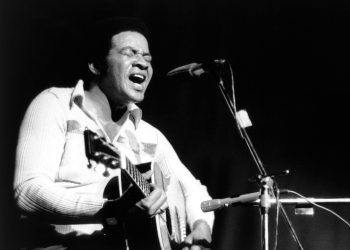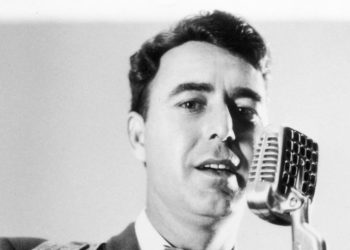Instrumental music encompasses compositions that primarily or exclusively use instruments, rather than vocals, to convey their artistic expression. This genre spans a wide array of styles and influences, from classical symphonies and jazz improvisations to rock anthems and electronic beats. Without the presence of lyrics, instrumental pieces rely on melodies, harmonies, rhythms, and timbres to evoke emotions and tell stories. These compositions can be complex, featuring intricate arrangements and virtuoso performances, or they can be minimalistic, focusing on the purity of sound and the interplay between silence and notes.
The beauty of instrumental music lies in its universality; it transcends language barriers and can be appreciated by diverse audiences worldwide. It offers listeners a unique experience, allowing them to interpret and feel the music in a deeply personal way. Instrumental tracks can serve as a backdrop for reflection, inspiration for creativity, or simply as a source of enjoyment and relaxation. Whether in the sweeping movements of an orchestral piece, the soulful expressions of a jazz ensemble, or the pulsating rhythms of an electronic track, instrumental music remains a powerful and versatile form of artistic expression, capable of conveying a vast spectrum of human emotions and experiences.
1. Blue Danube Waltz by Johann Strauss II

The “Blue Danube Waltz” (“An der schönen blauen Donau” in German) is one of the most famous and beloved compositions by Johann Strauss II, often referred to as the “Waltz King.” Premiered in 1867, this waltz has become an iconic representation of the Viennese classical music tradition.
The waltz takes its name from the Danube River, which flows through Vienna, and its enchanting melody captures the spirit of the city’s ballrooms and social gatherings during the 19th century. The “Blue Danube Waltz” is characterized by its graceful, sweeping melodies and elegant triple time rhythm, inviting dancers into a world of refined sophistication.
What sets this waltz apart is its delightful interplay of sections, ranging from lively and playful to grand and sweeping, reflecting Strauss’s ability to craft music that resonates with both the joy of dancing and the grandeur of a concert hall. The waltz gained widespread popularity and has been featured in numerous films, commercials, and cultural events, solidifying its place in the collective musical consciousness.
As a staple of New Year’s concerts in Vienna, the “Blue Danube Waltz” continues to captivate audiences worldwide, serving as a timeless testament to the enduring charm and elegance of Strauss’s compositions. Whether experienced in a ballroom or a concert hall, the waltz’s evocative beauty remains a testament to the enduring appeal of classical music.
2. Carnival of the Animals: The Swan by Camille Saint-Saens

“The Swan” is one of the most renowned movements from Camille Saint-Saëns’ whimsical and charming suite, “The Carnival of the Animals” (“Le Carnaval des Animaux”). Composed in 1886, Saint-Saëns created this delightful piece as a musical menagerie, each movement depicting various animals.
“The Swan,” scored for cello and piano, exudes a serene and graceful atmosphere. Its gentle, flowing melody captures the elegance and tranquility associated with a swan gliding across a peaceful pond. The cello’s lyrical lines, accompanied by delicate piano harmonies, paint a vivid musical portrait of this majestic bird.
This movement stands out not only for its inherent beauty but also for its emotional depth. Amidst the playful and often humorous character of “The Carnival of the Animals,” “The Swan” introduces a moment of introspection and melancholy. The composition’s serene beauty has made it a favorite in both classical and popular contexts, frequently performed as a standalone piece.
“The Swan” remains a beloved and enduring example of Saint-Saëns’ ability to infuse classical music with evocative imagery, captivating listeners with its elegance and timeless allure.
3. Autumn from The Four Seasons by Antonio Vivaldi

Antonio Vivaldi’s “Autumn,” part of the iconic set of violin concertos known as “The Four Seasons,” stands as a pinnacle of Baroque music. Composed around 1720, each concerto in the set represents a season, and “Autumn” vividly captures the vibrant and harvest-filled atmosphere of the fall.
The first movement opens with a lively and spirited tempo, depicting the bustling activity of the season. The violin, often representing the voice of the season, engages in playful and rhythmic dialogues with the accompanying orchestra. Vivaldi’s use of rapid, descending scales creates a sense of urgency and anticipation.
The second movement, “Adagio molto,” transitions into a slower, more contemplative mood. The violin takes on a more lyrical and expressive character, evoking the introspective moments of autumn. The melodic lines, rich in ornamentation, paint a serene picture of the season’s changing landscapes.
Closing with the third movement, “Allegro,” Vivaldi returns to a lively pace, infusing the music with dance-like qualities. The energetic rhythms and virtuosic passages capture the joyful and celebratory aspects of autumn, symbolizing the bountiful harvest and the festive spirit that accompanies it.
Vivaldi’s “Autumn” remains a beloved and frequently performed work, admired for its vivid musical depiction of the season’s beauty and energy. The interplay between the solo violin and the orchestra, coupled with Vivaldi’s innovative use of musical imagery, makes “Autumn” a timeless gem in the Baroque repertoire.
4. Flight of the Bumblebee by Nikolai Rimsky-Korsakov

“Flight of the Bumblebee” is a dazzling and virtuosic orchestral interlude written by Nikolai Rimsky-Korsakov. It is part of his opera “The Tale of Tsar Saltan,” composed in 1899-1900. The piece is renowned for its rapid pace and technical difficulty, making it a showcase for skilled instrumentalists, particularly soloists on the violin or other instruments.
The composition follows the character Prince Gvidon, who has been transformed into a bumblebee and embarks on a rapid, flight-like journey. The music brilliantly captures the imagery of a buzzing insect darting through the air with its frenetic and agile passages.
Rimsky-Korsakov’s “Flight of the Bumblebee” is characterized by its incessant and intricate chromatic runs, demanding precise and nimble execution from the performer. Despite its brevity – the entire piece typically lasts around one to two minutes – the intensity and technical challenges have made it a popular choice for musicians seeking to demonstrate their virtuosity.
Beyond its technical prowess, “Flight of the Bumblebee” has become a standalone concert piece, frequently performed in various arrangements and by various instruments. Its enduring popularity lies not only in its technical demands but also in its ability to captivate audiences with the thrilling and evocative portrayal of a buzzing bumblebee in musical form.
5. Prelude in C-sharp minor by Sergei Rachmaninoff

Sergei Rachmaninoff’s “Prelude in C-sharp minor, Op. 3, No. 2” is a solo piano piece that stands as one of the composer’s most famous and recognizable compositions. Rachmaninoff wrote the piece in 1892 when he was just 19 years old.
This prelude is characterized by its hauntingly beautiful melody, rich harmonies, and emotional depth. The piece opens with a dramatic and melancholic introduction, setting the tone for the expressive journey that follows. The main theme, introduced in the bass, unfolds with aching beauty, creating a sense of profound longing and introspection.
Rachmaninoff’s use of lush and intricate harmonies, combined with his gift for crafting memorable melodies, contributes to the enduring popularity of this prelude. The work requires technical virtuosity and emotional sensitivity from the performer, making it a favorite among pianists and audiences alike.
The “Prelude in C-sharp minor” is often associated with Rachmaninoff’s style, characterized by its Romantic sensibility and the use of rich, Romantic-era harmonies. The piece has been featured in various films, television shows, and has been arranged for different instruments, attesting to its lasting impact on the classical music repertoire. With its emotional depth and technical brilliance, Rachmaninoff’s Prelude continues to captivate listeners and remains a testament to the composer’s exceptional talent.
6. In the Hall of the Mountain King from Peer Gynt Suite by Edvard Grieg

“In the Hall of the Mountain King” is a dramatic and iconic piece composed by Edvard Grieg as part of his incidental music for Henrik Ibsen’s play “Peer Gynt.” Composed in 1875, the work later became part of Grieg’s larger suite, “Peer Gynt Suite No. 1.”
The composition represents the climactic scene in the play where Peer Gynt sneaks into the hall of the mountain king and is confronted by the irate creatures dwelling there. The music vividly captures the suspense, intensity, and eerie atmosphere of Peer’s perilous encounter.
The piece begins with a repetitive, ominous, and staccato motif played by the lower strings, gradually building tension. As Peer’s situation becomes more precarious, the music intensifies with escalating dynamics and the addition of more instruments. The relentless, rapid-paced crescendo mirrors the mounting danger and excitement of Peer’s escape.
The central theme, characterized by a descending chromatic line, is instantly recognizable and has become synonymous with mysterious and suspenseful moments in popular culture. Grieg’s masterful orchestration and ability to create vivid musical imagery make “In the Hall of the Mountain King” a standout piece in the world of classical music, celebrated for its evocative power and thrilling climactic energy.
7. Moonlight Sonata by Ludwig van Beethoven

Ludwig van Beethoven’s “Moonlight Sonata,” officially titled “Piano Sonata No. 14 in C-sharp minor ‘Quasi una fantasia’, Op. 27, No. 2,” is one of the most famous and beloved compositions in the classical piano repertoire. Composed in 1801, it is known for its evocative and contemplative qualities.
The popular nickname “Moonlight Sonata” was not given by Beethoven but is believed to have originated from a music critic who described the first movement as resembling moonlight shining on Lake Lucerne. The sonata consists of three movements, with the first movement, marked “Adagio sostenuto,” being the most well-known.
The hauntingly beautiful first movement is characterized by a slow, flowing tempo and features a gentle melody played over a repeated triplet pattern in the accompaniment. The overall mood is introspective and expressive, creating a sense of calm and contemplation. The movement is often associated with a sense of serenity and has a timeless quality that resonates with listeners.
Beethoven’s “Moonlight Sonata” is celebrated for its emotional depth, innovative structure, and its influence on Romantic music. Its enduring popularity has made it a staple of classical piano repertoire, frequently performed in concert halls and embraced by audiences around the world. The sonata’s iconic first movement, in particular, continues to captivate and move listeners with its timeless beauty.
8. Prelude No. 1 in C major by J.S. Bach

Johann Sebastian Bach’s Prelude No. 1 in C major, BWV 846, is the opening piece from his collection of keyboard works, “The Well-Tempered Clavier, Book I.” Composed in the early 18th century, this collection consists of preludes and fugues in all major and minor keys, showcasing Bach’s mastery of counterpoint and exploration of various musical ideas.
The Prelude in C major is a sublime example of Bach’s contrapuntal genius. It unfolds with a steady, flowing stream of eighth notes, creating a sense of continuous motion and harmonic exploration. The piece is written in a simple binary form, with two sections that share thematic material and gradually modulate through different keys.
One of the remarkable aspects of this prelude is its accessibility and universal appeal. Despite its technical brilliance and intricate counterpoint, the piece possesses a sense of clarity and simplicity that makes it a favorite among musicians and audiences alike.
The Prelude in C major serves as a musical palette cleanser, introducing the listener to the key of C major in a contemplative and harmonically rich manner. Its timeless beauty has made it a staple in the repertoire of pianists and keyboard enthusiasts, and its influence resonates across centuries, transcending the boundaries of classical music.
9. Thus Spoke Zarathustra by Richard Strauss

“Also sprach Zarathustra” (Thus Spoke Zarathustra) is a tone poem for orchestra composed by Richard Strauss in 1896. The title refers to Friedrich Nietzsche’s philosophical novel of the same name, and Strauss’s composition is renowned for its association with Stanley Kubrick’s film “2001: A Space Odyssey,” where it became an iconic part of the soundtrack.
The composition is structured in nine sections, each corresponding to a chapter in Nietzsche’s work. The opening fanfare, known as the “Sunrise,” is particularly famous and has been used in various contexts, becoming instantly recognizable. It is characterized by a powerful rising motif played by the brass section, creating a sense of grandeur and triumph.
Each section of “Also sprach Zarathustra” explores different moods and themes, reflecting the philosophical ideas of Nietzsche’s book. Strauss employs a large orchestra and showcases his mastery of orchestration, creating a vivid and dramatic sonic landscape.
The piece is notable for its innovative use of tonality and its exploration of philosophical concepts through music. The recurring fanfare and the bold, sweeping orchestration contribute to the work’s lasting impact and popularity, making it one of Richard Strauss’s most celebrated compositions.
10. The Entertainer by Scott Joplin

“The Entertainer” is a classic ragtime composition by Scott Joplin, one of the most influential composers of this genre. Joplin composed “The Entertainer” in 1902, and it quickly became one of his most recognized and enduring works.
Ragtime, a genre rooted in African American musical traditions, gained popularity in the late 19th and early 20th centuries. “The Entertainer” exemplifies the syncopated rhythms, lively melodies, and playful character that define ragtime music.
The piece is structured in a march-like form with four distinct sections. It opens with a catchy and syncopated theme, followed by contrasting melodic and harmonic episodes. Joplin’s use of syncopation, where accents fall on offbeats, creates a lively and toe-tapping quality that characterizes ragtime.
“The Entertainer” gained renewed fame in the 1970s when it was prominently featured in the soundtrack of the film “The Sting,” which led to a resurgence of interest in ragtime music. The piece became a hit once again and earned Joplin a posthumous Grammy Award in 1974.
Scott Joplin’s “The Entertainer” remains a classic in the ragtime repertoire, celebrated for its infectious energy, melodic charm, and historical significance in the development of American music.
11. Ride of the Valkyries by Richard Wagner

“Ride of the Valkyries” (“Walkürenritt” in German) is one of the most famous and recognizable compositions by the German composer Richard Wagner. It is part of the opera “Die Walküre,” the second opera in Wagner’s four-opera cycle “Der Ring des Nibelungen” (The Ring of the Nibelung).
Composed in 1856, “Ride of the Valkyries” is featured in the opera’s third act. The music accompanies the entrance of the Valkyries, warrior maidens who gather the souls of fallen heroes on the battlefield and carry them to Valhalla. The composition is known for its dramatic intensity, driving rhythm, and powerful orchestration.
The main theme, played by the brass section, is instantly recognizable and has become a cultural symbol associated with heroism and battle. The galloping rhythm and soaring melody create a sense of excitement and urgency, reflecting the Valkyries’ energetic and heroic nature.
“Ride of the Valkyries” has transcended its operatic origins and has been widely used in popular culture, from film and television to commercials. Its bold and exhilarating quality has made it a favorite for concert performances and a symbol of epic and triumphant moments in music.
12. Asturias (Leyenda) by Isaac Albeniz

“Asturias (Leyenda)” is a piano suite written by Spanish composer and pianist Isaac Albéniz. Although originally composed for the piano, it is often transcribed and performed on the guitar. The piece is part of Albéniz’s larger suite, “Suite Española,” which consists of piano pieces inspired by various regions of Spain.
Composed in 1890, “Asturias” is subtitled “Leyenda,” which translates to “Legend.” The piece is intended to evoke the spirit and character of the Asturias region in northern Spain. Its rich harmonies, intricate fingerpicking patterns, and evocative melodies create a vivid musical portrayal of the landscapes and cultural heritage of the region.
The opening section of “Asturias” features a haunting melody played over a repetitive ostinato pattern, creating a sense of longing and nostalgia. The music gradually builds in intensity, incorporating virtuosic passages and dynamic contrasts, reflecting the passionate and fiery nature of Spanish folk music.
Albéniz’s “Asturias (Leyenda)” has become one of the most celebrated and frequently performed works in the classical guitar repertoire. Its expressive qualities, combined with the technical demands it places on the performer, make it a showcase piece for both pianists and guitarists, showcasing the beauty and complexity of Spanish musical traditions.
13. Canon in D by Johann Pachelbel

“Canon in D” by Johann Pachelbel is a timeless and beloved piece of Baroque music. Composed in the late 17th century, it is one of Pachelbel’s most famous and enduring compositions. The piece is known for its exquisite beauty, serene character, and the ingenious use of a canon—a musical form where a melody is imitated and repeated by voices or instruments.
“Canon in D” is scored for three violins and basso continuo (usually played by a cello and harpsichord or organ). The most iconic part of the piece is the repeating and overlapping pattern of chords that forms the canon. This creates a mesmerizing and harmonically rich texture.
The work is characterized by its gentle and soothing quality, making it a popular choice for weddings, receptions, and other celebratory occasions. The simplicity of the harmonic progression, combined with the elegant melody, contributes to the piece’s enduring popularity and widespread appeal.
Despite its initial relative obscurity during Pachelbel’s lifetime, “Canon in D” experienced a resurgence in the 20th century and has since become one of the most recognized and frequently performed pieces in the classical repertoire. Its enduring popularity attests to the timeless beauty and emotional resonance of Pachelbel’s composition.
14. Fur Elise by Ludwig van Beethoven

“Für Elise” is one of Ludwig van Beethoven’s most famous and frequently performed compositions. Written around 1810, the piece is officially titled Bagatelle No. 25 in A minor, WoO 59, and is commonly referred to as “Für Elise,” a title likely added by later editors.
This short piano piece is characterized by its captivating and elegant melody. Its popularity can be attributed to the charming simplicity of the main theme, which features a delightful interplay between the right and left hands. The piece is in A minor but transitions to A major in certain sections, adding contrast and richness to the overall mood.
“Für Elise” was not published during Beethoven’s lifetime and was discovered by later scholars. The identity of “Elise” remains a subject of speculation, as Beethoven’s original manuscript is believed to be unclear regarding the dedicatee’s name.
Despite its brevity, “Für Elise” has become a staple in the piano repertoire and is widely recognized and loved by audiences around the world. Its enduring appeal lies in the charm of its melody and the way it showcases Beethoven’s ability to craft memorable and emotionally resonant music.
15. Clair de Lune by Claude Debussy

“Clair de Lune” is one of the most famous compositions by French composer Claude Debussy. It is the third movement of his Suite Bergamasque, written between 1890 and 1905 but not published in its entirety until 1905.
“Clair de Lune,” which translates to “Moonlight” in English, is characterized by its dreamy, impressionistic atmosphere. The piece unfolds with delicate and cascading arpeggios, creating a sense of serenity and introspection. The gentle melody, intertwined with lush harmonies, evokes the imagery of moonlight casting its soft glow on a tranquil landscape.
Debussy’s “Clair de Lune” is a masterpiece of the Impressionist movement in music, characterized by its emphasis on atmosphere and evocative imagery rather than traditional harmonic structures. The piece has a timeless quality, and its emotive power has made it a favorite for both pianists and audiences.
Renowned for its expressive beauty, “Clair de Lune” has been widely used in various films, commercials, and other media, further solidifying its status as one of the most recognizable and beloved piano compositions in the classical repertoire.









